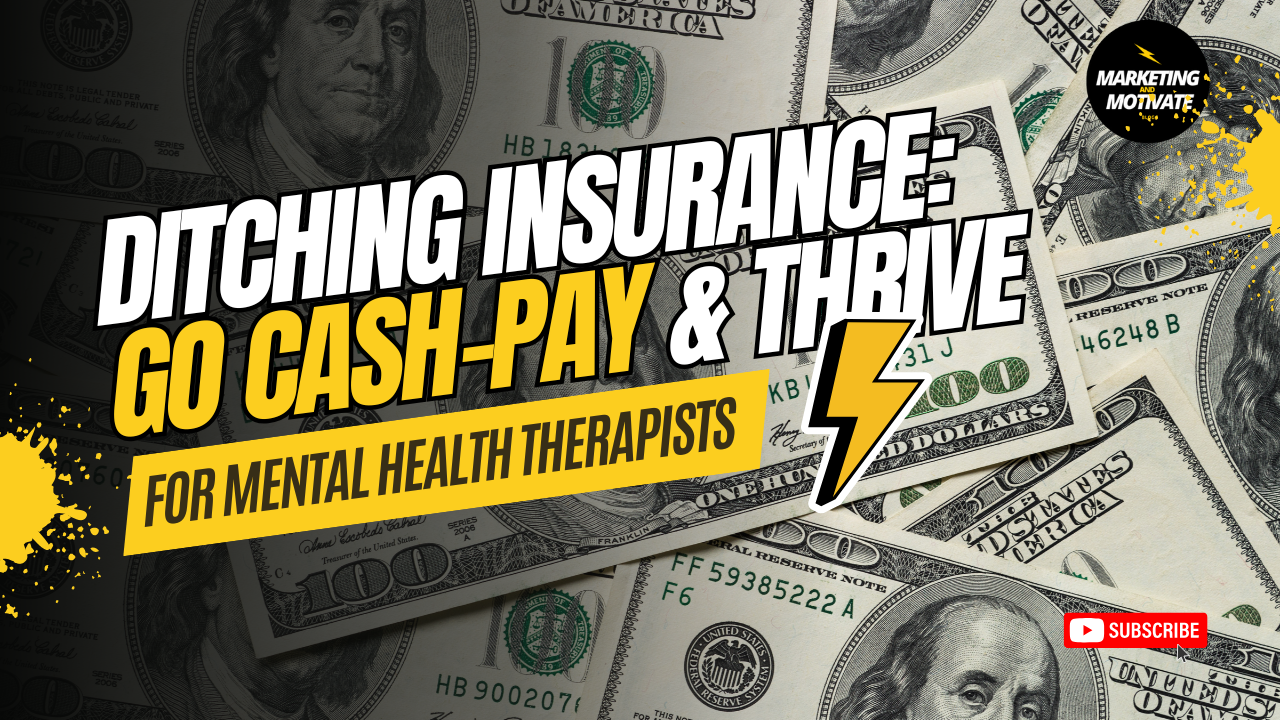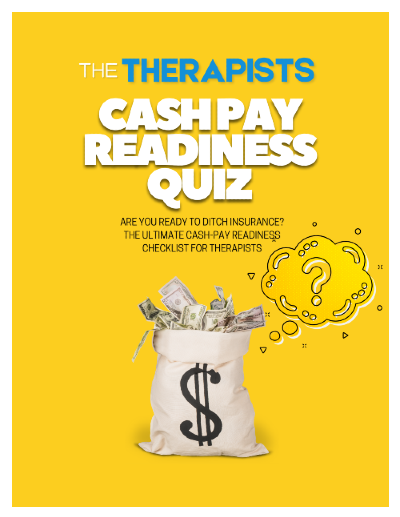Why You’re Struggling with Insurance & How Cash-Pay Can Transform Your Mental Health Practice

For many mental health therapists, working with insurance companies feels like an uphill battle. While insurance may seem like a way to attract more clients and ensure consistent income, the reality is often the opposite—low reimbursement rates, administrative headaches, and a loss of control over treatment decisions.
The good news? There’s a better way. Transitioning to a cash-pay (private-pay) model allows you to regain control of your practice, increase profitability, and provide better care to committed clients.
If you’ve been feeling stuck in an insurance-based model that’s draining your time and energy, this guide will help you understand the struggles you’re facing and how switching to cash-pay can be a game-changer for your practice.
The Challenges of Running an Insurance-Based Practice
Many therapists start their practice thinking that accepting insurance is the only way to grow. However, over time, they realize that insurance creates more obstacles than opportunities.
1. Low Reimbursement Rates & Financial Struggles
- Insurance companies dictate how much you get paid per session, often significantly less than your actual value.
- To make a sustainable income, therapists must see more clients, leading to burnout.
- Rate negotiations are nearly impossible, meaning your earnings are controlled by the insurance provider, not you.
2. Administrative Overload & Burnout
- Filing claims, verifying benefits, and handling denials can consume hours of unpaid work every week.
- Many therapists end up hiring billing specialists just to keep up, increasing business expenses.
- Delayed payments or outright denials can create cash flow issues, making financial planning difficult.
3. Lack of Clinical Autonomy
- Insurance companies dictate how many sessions a client can have and what types of treatment they’ll cover.
- Some require diagnosing clients with a mental health disorder to approve coverage, which may not align with ethical therapy practices.
- Therapists often feel pressured to fit treatment into what insurance allows rather than what’s best for the client.
4. Attracting the Wrong Clients
- Since insurance makes therapy financially accessible, clients may book sessions without being fully committed to the therapeutic process.
- No-show rates tend to be higher among insurance-based clients, leading to wasted time and lost revenue.
- Clients who pay out-of-pocket tend to be more engaged and take therapy more seriously.

Why Cash-Pay is the Solution for a Thriving Mental Health Practice
Switching to a cash-pay model allows therapists to work smarter, not harder—leading to better financial stability, increased autonomy, and more fulfilling client relationships.
1. Financial Freedom & Higher Income Potential
- You set your own rates instead of relying on insurance companies to decide your worth.
- Cash-pay clients pay what your services are actually worth, increasing your revenue per session.
- Seeing fewer clients at higher rates reduces burnout while maintaining a full-time income.
2. Reduced Administrative Burden
- No more filing insurance claims, chasing down payments, or dealing with claim denials.
- Less paperwork means more time focusing on actual therapy and client care.
- You get paid immediately rather than waiting weeks or months for reimbursement.
3. More Control Over Your Practice & Treatment Plans
- You decide the length, frequency, and type of therapy that best serves your clients.
- No restrictions on who you can treat, what interventions you use, or how long therapy lasts.
- More time to focus on quality care instead of fitting sessions into an insurance-mandated structure.
4. Attracting Committed, Ideal Clients
- Clients who pay out of pocket are more invested in their mental health journey.
- Fewer last-minute cancellations and no-shows, since clients are financially committed.
- Higher engagement leads to better therapy outcomes and long-term client retention.

How to Successfully Transition from Insurance to a Cash-Pay Model
Shifting from insurance to cash-pay can feel intimidating, but a strategic transition makes the process smooth and financially stable.
1. Evaluate Your Practice & Readiness
- Assess what percentage of your income comes from insurance vs. private pay clients.
- Determine if your current client base has the ability to transition to private pay.
- Research the demand for cash-pay therapy services in your area.
2. Set Your Pricing Strategy
- Research competitive private-pay rates in your region.
- Factor in your experience, niche, and desired income goals.
- Offer different pricing tiers, such as:
- Standard 50-minute sessions
- Extended sessions or intensive therapy packages
- Sliding scale for select clients
3. Educate Clients About the Benefits of Cash-Pay Therapy
- Explain how private-pay allows for more personalized, high-quality care.
- Emphasize benefits like flexibility, longer session availability, and complete confidentiality.
- Provide superbills so clients can submit for out-of-network reimbursement.
4. Market Your Practice to Attract Cash-Pay Clients
- Optimize your website and social media with keywords like:
- “Private-pay therapist in [your city]”
- “Cash-pay mental health services”
- “Therapy without insurance restrictions”
- Create valuable content marketing (blogs, videos, social media posts) educating clients on why private-pay therapy is worth the investment.
- Network with doctors, wellness professionals, and other referral sources who can send high-quality clients your way.
5. Create a Smooth Transition Plan
- Start with a hybrid model—gradually reducing insurance clients while increasing cash-pay clients.
- Notify existing clients well in advance if you plan to stop accepting insurance.
- Offer payment plans or packages for clients who need financial flexibility.
Overcoming Common Fears About Cash-Pay Therapy
1. “What if I Lose Too Many Clients?”
- Some clients will leave, but those who stay will be more committed.
- Seeing fewer clients at higher rates means your overall income can remain stable or even increase.
2. “Will People Be Willing to Pay Out of Pocket?”
- Many people already invest in personal training, life coaching, and wellness services.
- Therapy is an investment in mental well-being that clients value when positioned correctly.
3. “How Do I Compete with Insurance-Based Therapists?”
- Differentiate yourself by offering:
- Premium services (longer sessions, deeper engagement, or specialized treatment).
- Flexible scheduling and exclusive therapy packages.
- A personalized, high-touch experience that insurance-based therapy doesn’t provide.
Take Control of Your Practice with a Cash-Pay Model
If you’re tired of dealing with:
✅ Low insurance reimbursement rates
✅ Endless paperwork and claim denials
✅ Insurance companies dictating your treatment plans
Then a cash-pay model is the future of your practice.
✅ Earn what you’re worth
✅ Reduce burnout and stress
✅ Work with motivated, engaged clients
✅ Provide therapy on your own terms
Ready to make the transition? Click the link below to take the Cash-Pay Readiness Quiz now. Discover your readiness score + tools to help you transition with clarity and confidence.
👉 Take the FREE Cash-Pay Readiness Quiz for Therapists to start your journey toward financial freedom and practice autonomy today!


